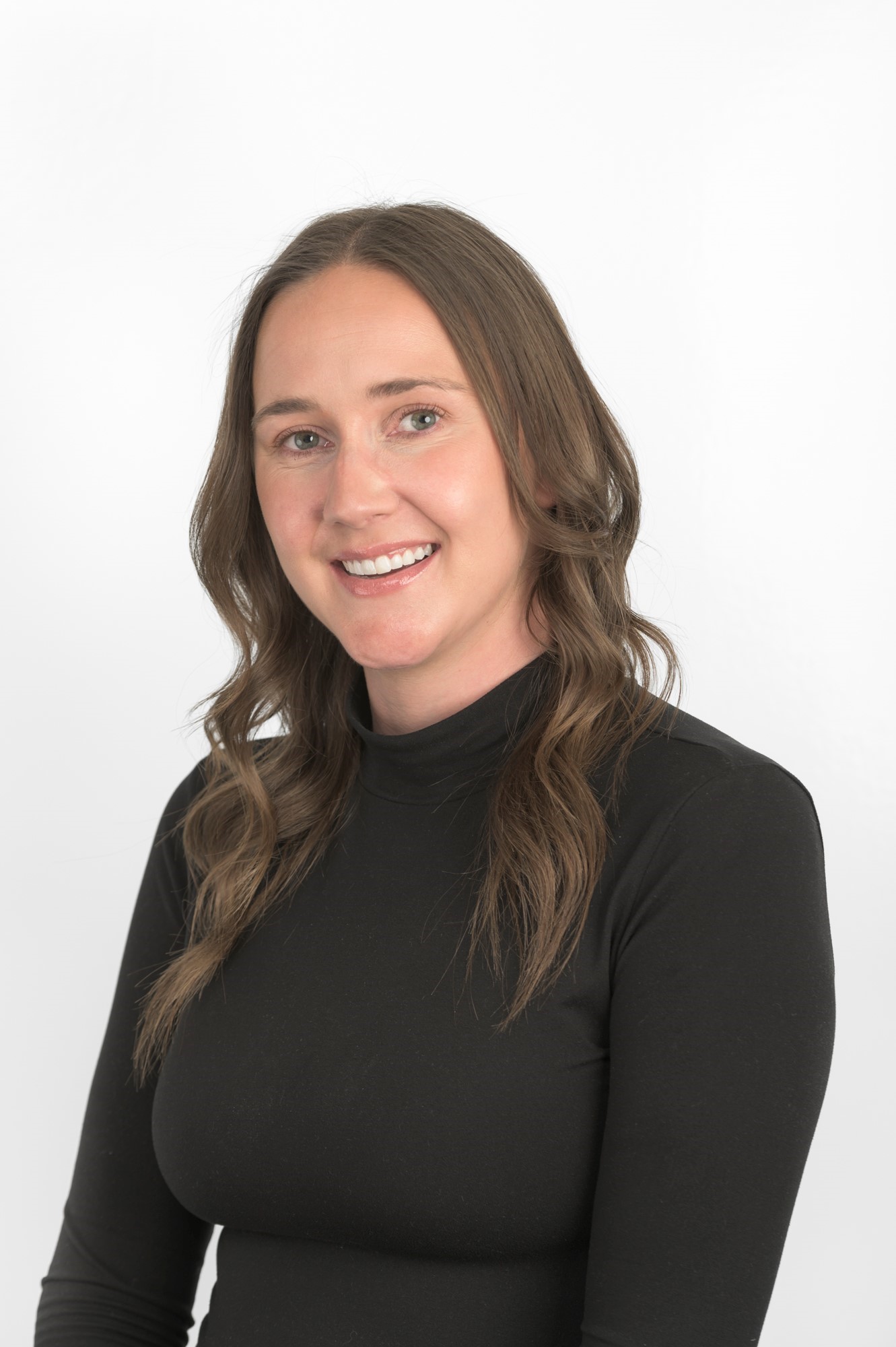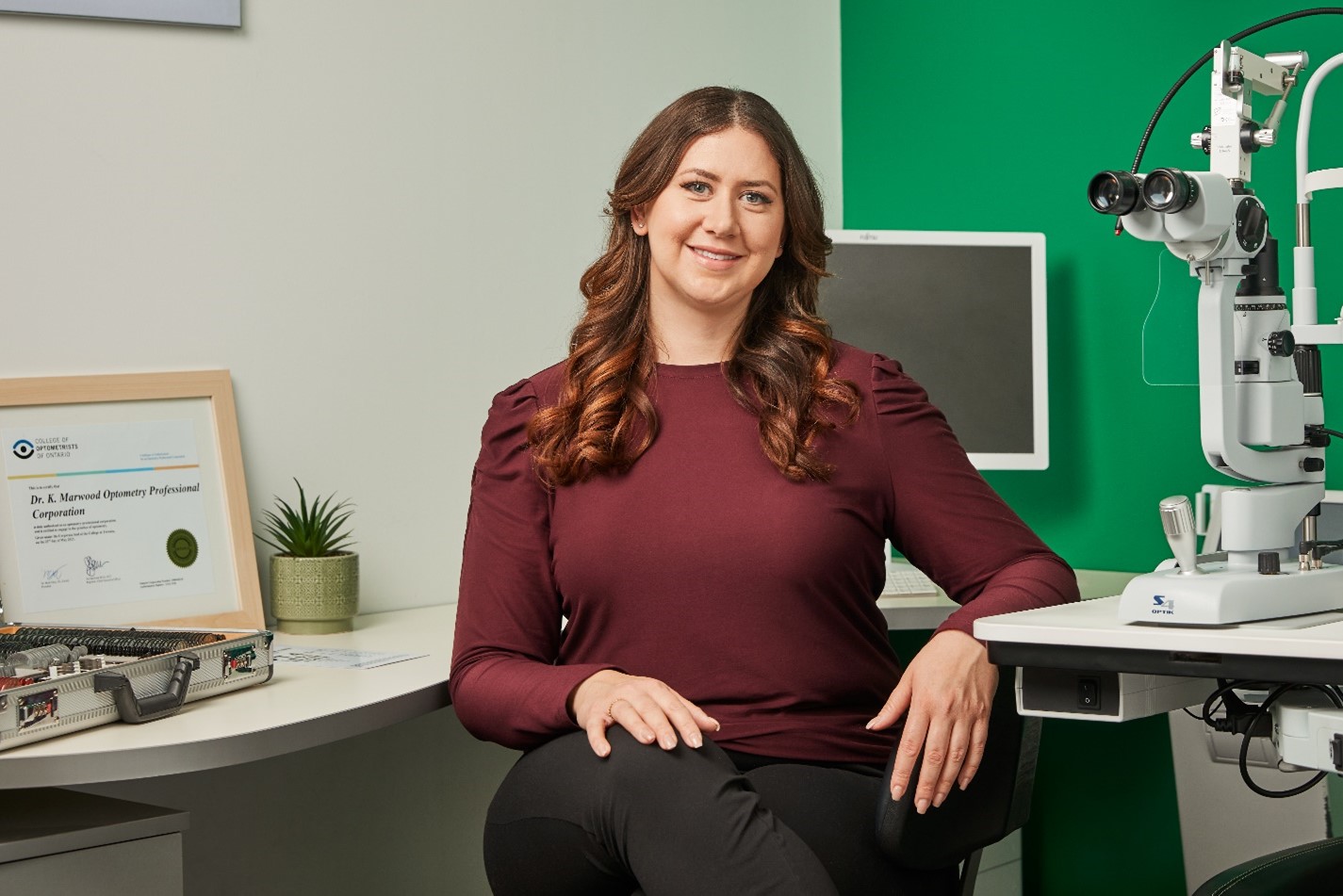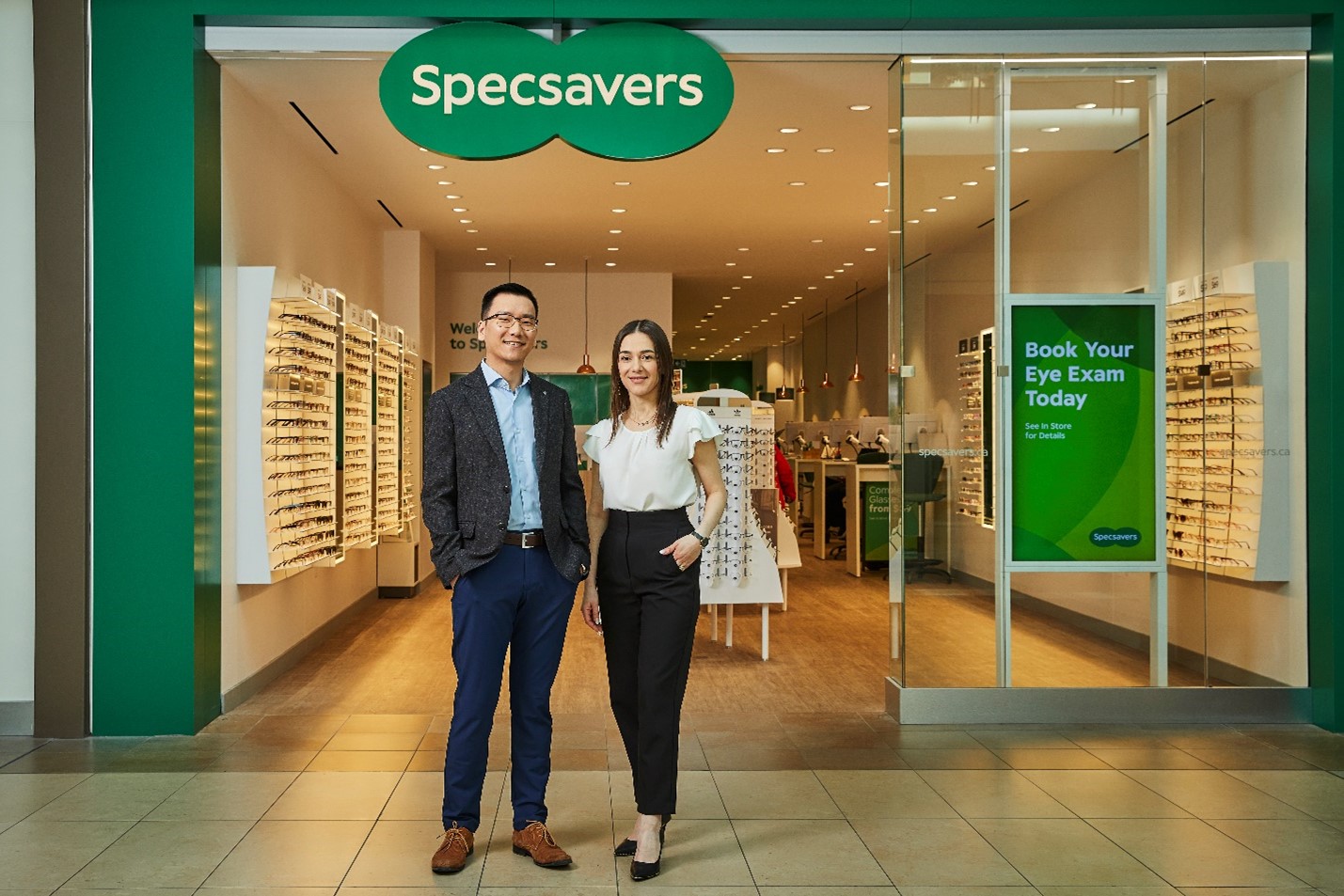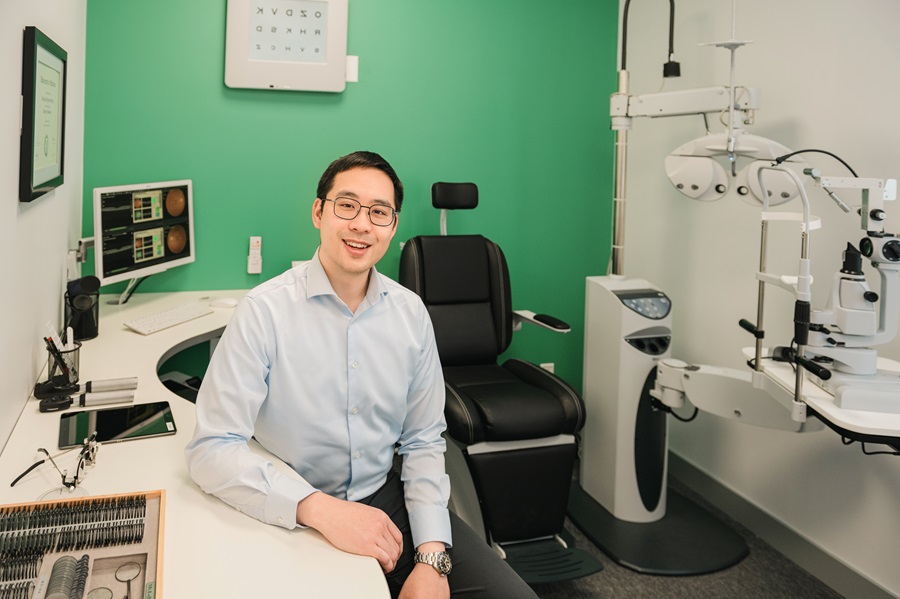
“With Specsavers taking care of a lot of the background business aspects, I can spend my effort on delivering a good patient experience.” – Dr. Thomas Jay Yung, Optometry Partner
Since graduating from the University of Waterloo in 2019, Dr. Thomas Jay Yung has been practicing optometry full time in Calgary. In 2023, Dr. Yung took the plunge into partnership with Specsavers and clinic ownership. Now that he’s celebrated one year at his clinic located in Specsavers at Marlborough Mall, Dr. Yung shares how he’s finding business ownership and how Specsavers marketing is helping to bring in new patients.
Why did you choose partnership with Specsavers?
When I decided to become an optometrist, I had also decided that I would want to own my own practice as well. After I graduated, I began looking for opportunities to own a clinic but circumstances such as cost, and a lack of good opportunities prevented me from realizing that goal.
I heard about Specsavers from colleagues and co-workers around mid-2022. I decided to look further into partnership because I heard positive feedback from those who were already in the partnership process. When I learned more, it only reinforced the positives I had previously heard. I was convinced by the reasonable $25,000 entrance fee for the amount of help that I would get in starting up the Specsavers store. Not having to worry about those aspects really helped to minimize the stress that comes with opening a new independent clinic.
How’s business at Specsavers Marlborough Mall and your clinic?
So far, so good! I think collaborations with someone like Col. Chris Hadfield are worthwhile since it helps promote the importance of eye health from someone who is highly respected. The best results for my clinic have been from Specsavers’ marketing support prioritizing eye health, eye exams, and OCT messaging. That’s what seems to get people in our clinic. This past August was a record month for us, and it was a combination of reaching our one-year recalls, the summer being a busier time, and the great promotions Specsavers has for eyewear.
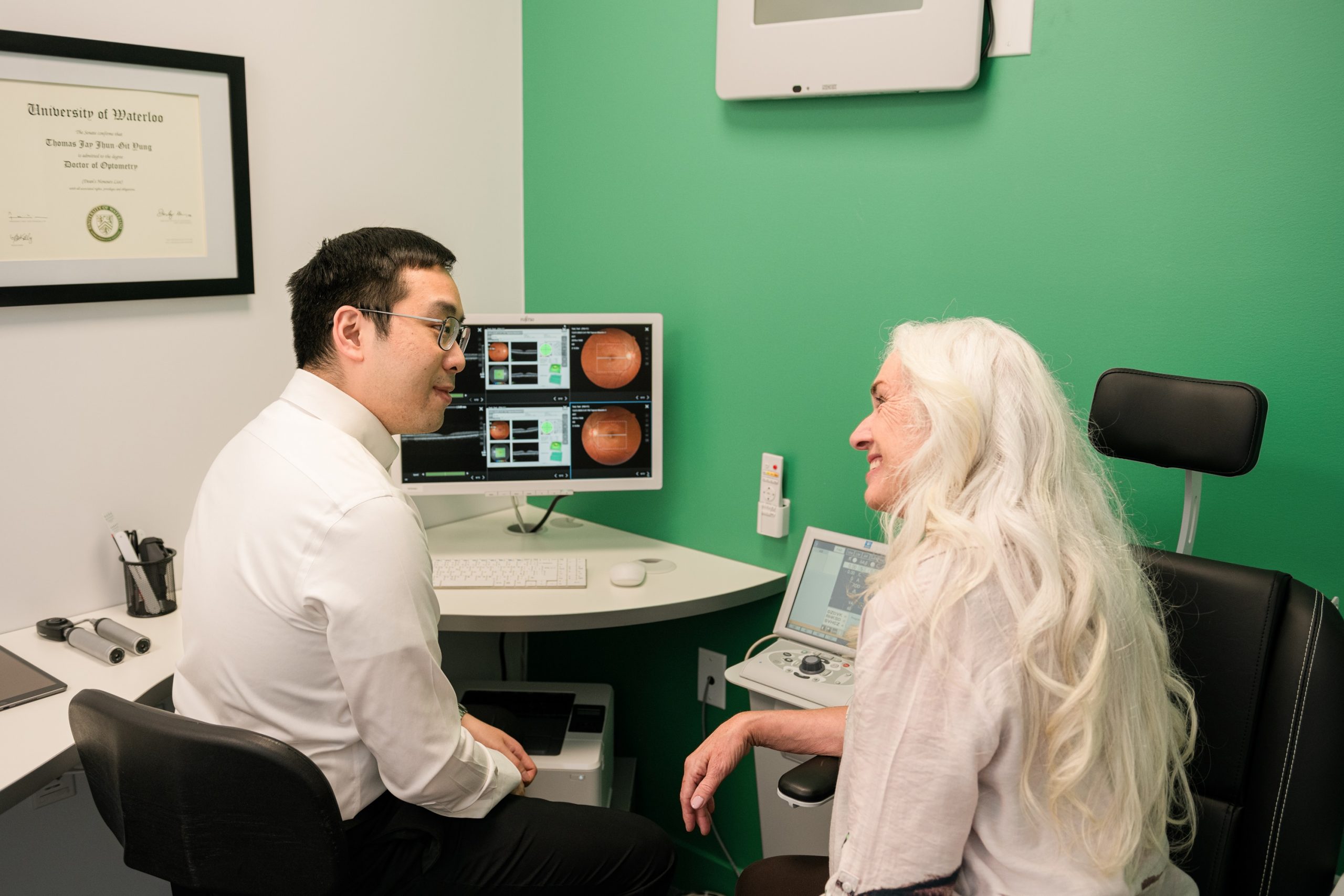
We’ve been making our name known throughout the community and have been getting plenty of positive feedback from patients. It’s by the patient experience that I would measure the success of my clinic. Ultimately, the team at Specsavers Marlborough Mall work together so that people can have quality eyecare, which will positively impact their quality of life. So, at the end of the day, if the patient is taken care of, I would call that a success. And judging by the feedback we have received over the past year – I would say that we’ve been very successful.
What’s been a highlight about opening your independent clinic?
Opening up my own clinic means that I’m able to run it the way I’d like to. My focus has always been on the patient experience and being in full control of that means that I have the freedom to do my best in that area.
My favourite part of being an optometrist is that I can make a positive difference in the lives of people every day. Seeing satisfied patients is what makes this job and the schooling I did all worth it. I believe in providing the best clinical care, giving honest recommendations, and doing it all for an affordable cost.
With Specsavers helping with a lot of the background business aspects, I can spend my effort on delivering a good patient experience.
Make the next move in your optometry career
Whether you have an existing business or you’re looking to start out, we have partnership options that could work for you. Our partnership team can tell you how.
Visit specsaverspartnership.ca
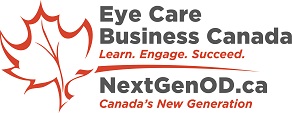



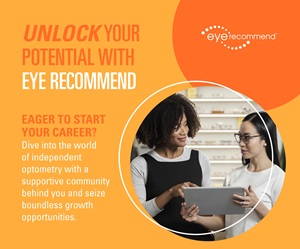


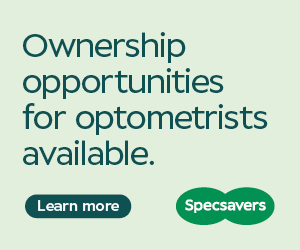



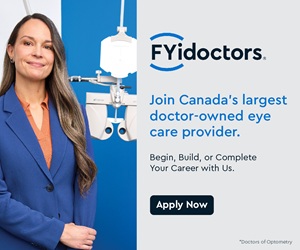




 Turn your aspirations into reality with guidance from our expert coaches. They’ll help you set clear business objectives, pinpoint your target market, and devise an effective strategy.
Turn your aspirations into reality with guidance from our expert coaches. They’ll help you set clear business objectives, pinpoint your target market, and devise an effective strategy. Achieving success in optometry requires more than just clinical prowess; robust management skills are just as critical. This program provides hands-on coaching in vital areas such as finance, operations, and business development, ensuring a comprehensive approach to practice management.
Achieving success in optometry requires more than just clinical prowess; robust management skills are just as critical. This program provides hands-on coaching in vital areas such as finance, operations, and business development, ensuring a comprehensive approach to practice management. The path of entrepreneurship is full of challenges, but you won’t be alone. Our coaches offer continuous encouragement and support, empowering you to unlock your potential and tackle obstacles confidently.
The path of entrepreneurship is full of challenges, but you won’t be alone. Our coaches offer continuous encouragement and support, empowering you to unlock your potential and tackle obstacles confidently. Vision Entrepreneur connects you to a vast optometry community. Our coaches introduce you to professionals, mentors, and investors. By expanding your professional network and resources, they open doors to clinic acquisition opportunities.
Vision Entrepreneur connects you to a vast optometry community. Our coaches introduce you to professionals, mentors, and investors. By expanding your professional network and resources, they open doors to clinic acquisition opportunities. Develop marketing and sales strategies that attract and retain clients. By adjusting a game plan to your niche and budget, our coaches guide you to create compelling marketing materials and targeted sales strategies while enhancing your online presence.
Develop marketing and sales strategies that attract and retain clients. By adjusting a game plan to your niche and budget, our coaches guide you to create compelling marketing materials and targeted sales strategies while enhancing your online presence. Starting an optometry practice involves a deep understanding of the legal and regulatory landscapes. Our program offers expert advice and links you with legal professionals to ensure full compliance with all regulations.
Starting an optometry practice involves a deep understanding of the legal and regulatory landscapes. Our program offers expert advice and links you with legal professionals to ensure full compliance with all regulations. Balancing the demands of entrepreneurship without compromising personal well-being is crucial. Our coaches provide strategies to help you manage stress and maintain a healthy balance, ensuring you thrive both personally and professionally.
Balancing the demands of entrepreneurship without compromising personal well-being is crucial. Our coaches provide strategies to help you manage stress and maintain a healthy balance, ensuring you thrive both personally and professionally. Transform the dream of a successful optometry practice into reality with Vision Entrepreneur. Ready to take the first step toward a successful optometry practice? Visit us today to learn more.
Transform the dream of a successful optometry practice into reality with Vision Entrepreneur. Ready to take the first step toward a successful optometry practice? Visit us today to learn more.


 Dr. Buzea at the opening of his Specsavers store and independent clinic at Southcentre Mall in Calgary, AB.
Dr. Buzea at the opening of his Specsavers store and independent clinic at Southcentre Mall in Calgary, AB.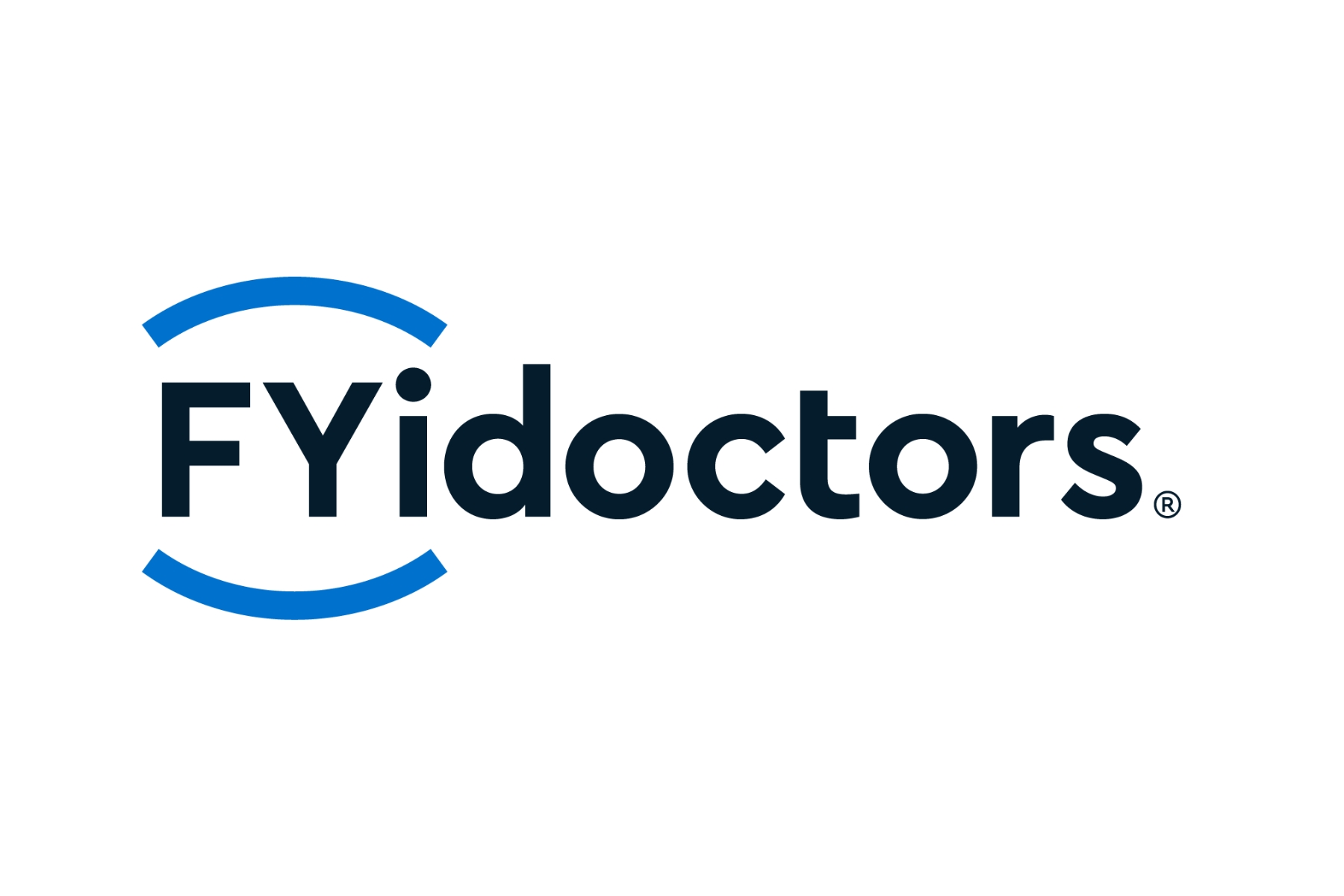
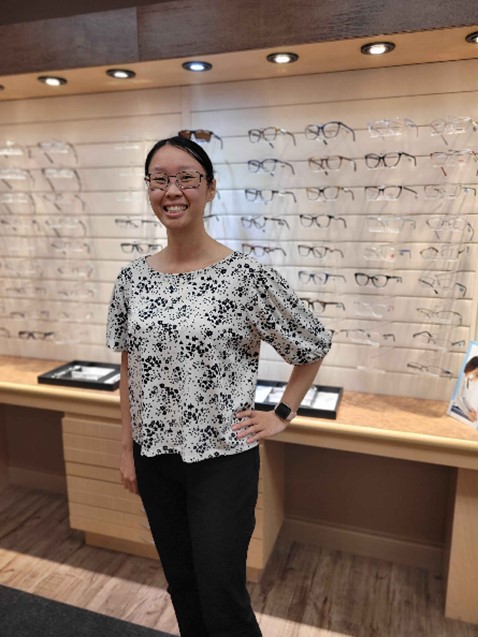 “Participating in the summer student program at FYidoctors was an amazing hands-on and inspiring experience. I appreciated the flexibility to choose whether I wanted to work at the reception or the dispensary, allowing me to tailor the program to my interests and refine any skills that I wanted to improve. Guest speakers, including experienced doctors with special interests, provided us with insightful presentations each week that broadened and deepened my understanding of the field. This program truly offered a customizable and enriching experience that has left me more excited for my future career.”
“Participating in the summer student program at FYidoctors was an amazing hands-on and inspiring experience. I appreciated the flexibility to choose whether I wanted to work at the reception or the dispensary, allowing me to tailor the program to my interests and refine any skills that I wanted to improve. Guest speakers, including experienced doctors with special interests, provided us with insightful presentations each week that broadened and deepened my understanding of the field. This program truly offered a customizable and enriching experience that has left me more excited for my future career.” 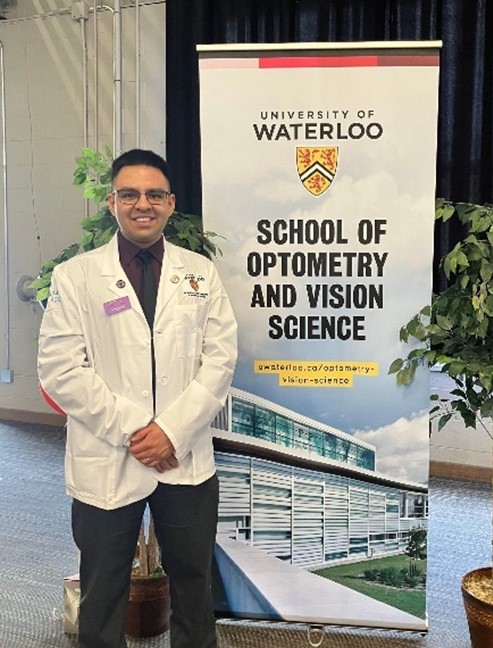
 “The FYidoctors Summer Student Program gave me the opportunity to enhance my clinical skills, particularly with patient communication and the use of diagnostic tools like the OCT and Humphrey Visual Field. It was valuable to shadow ODs during complex eye exams as well as having the opportunity to practice the skills I had learned in school like retinoscopy and refraction. The discussions I had with the seasoned professionals at a rural clinic not only boosted my confidence in my skills but also deepened my understanding of the importance of trust in the patient-doctor relationship. The advice and mentoring I received this summer led to an invaluable learning experience.”
“The FYidoctors Summer Student Program gave me the opportunity to enhance my clinical skills, particularly with patient communication and the use of diagnostic tools like the OCT and Humphrey Visual Field. It was valuable to shadow ODs during complex eye exams as well as having the opportunity to practice the skills I had learned in school like retinoscopy and refraction. The discussions I had with the seasoned professionals at a rural clinic not only boosted my confidence in my skills but also deepened my understanding of the importance of trust in the patient-doctor relationship. The advice and mentoring I received this summer led to an invaluable learning experience.”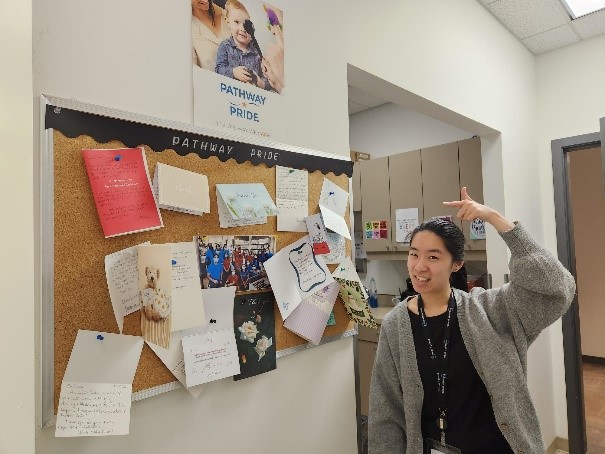 “I had an amazing experience participating in the FYidoctors Summer Student Program after my first year of optometry school. It was a fantastic opportunity to work in a clinic, observe the patient pathway, and apply what I learned in school into what I was learning in clinic. Because there are many FYidoctors locations across Canada, I am fortunate to be able to work and provide care to patients within my community. I was also able to connect with optometrists in my clinic. During the program, I was able to work and shadow the doctors, opticians, pre-screen, and front desk staff. I was also able to meet and learn from other doctors and peers in the program through weekly lunch hour socials and presentations. It is a truly rewarding and enriching 3-month experience interacting with patients and learning more about optometry!”
“I had an amazing experience participating in the FYidoctors Summer Student Program after my first year of optometry school. It was a fantastic opportunity to work in a clinic, observe the patient pathway, and apply what I learned in school into what I was learning in clinic. Because there are many FYidoctors locations across Canada, I am fortunate to be able to work and provide care to patients within my community. I was also able to connect with optometrists in my clinic. During the program, I was able to work and shadow the doctors, opticians, pre-screen, and front desk staff. I was also able to meet and learn from other doctors and peers in the program through weekly lunch hour socials and presentations. It is a truly rewarding and enriching 3-month experience interacting with patients and learning more about optometry!”